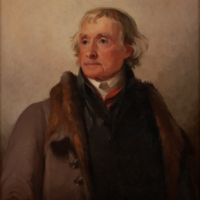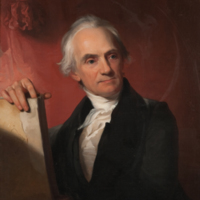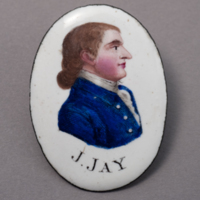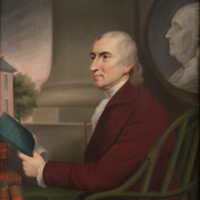APS Museum Collection
Dublin Core
Title
APS Museum Collection
Creator
American Philosophical Society Museum
Contributor
APS Museum’s online collection database was made possible by a grant from The Pew Charitable Trusts.
Publisher
American Philosophical Society
Description
The APS Museum is responsible for the American Philosophical Society’s collection of fine art, furniture, and objects; the APS Library holds the collection of manuscripts and photographs, and is a nationally recognized center for research in the history of the sciences, medicine, technology, and Early America. For more information on library collection, please visit http://amphilsoc.org/library
Subject
The American Philosophical Society Museum has a historically significant collection of approximately 3,000 artifacts and fine art objects, many dating back to the late 18th century. Objects were acquired predominantly through past APS members and scientific activities of the APS. The collection reflects the central role of the APS and Philadelphia in the founding of the nation as well as the development of science and technology in the colonies and early Republic. The collection is strongest in objects relating to early American history (especially Benjamin Franklin, the APS’s founder) and scientific and technological instruments from the 18th century through the early 20th century.
Relation
APS Botanical Specimens
There are over 2,250 herbarium sheets in the APS Museum Collection, all of which are currently on long-term deposit at the Academy of Natural Sciences, Philadelphia (ANSP).Lewis and Clark
In 1805 and 1806, Thomas Jefferson gave the American Philosophical Society herbarium sheets collected by Meriwether Lewis and William Clark during their 1804-1806 expedition. All of the APS-owned Lewis and Clark herbariums sheets are on this database. In 2002, the ANSP published a comprehensive taxonomic discussion and digital imagery set of the combined collection of Lewis and Clark herbarium sheets. Descriptions in the APS database are from that study set: Spamer, Earle E., and Richard M. McCourt. The Lewis and Clark Herbarium, Academy of Natural Sciences of Philadelphia (PH-LC): Digital imagery study set. Academy of Natural Sciences of Philadelphia, Special Publication 19, 2002.Benjamin Smith Barton
In addition to the 185 Lewis and Clark herbarium sheets, the APS also owns the Benjamin Smith Barton herbarium collection (2,000+ sheets) also on long-term deposit at ANSP. These sheets are not currently available on the online database, but will be made available after the collection is photographed. To learn more about these collections, we encourage you to visit the ANSP website at:http://www.ansp.org/research/biodiv/botany/index.php
Source
http://apsmuseum.org/collections/online-collection/
Collection Items
Portrait of Benjamin Franklin
This portrait of Benjamin Franklin highlights his study of ”useful knowledge.” Franklin is surrounded with books, papers and a bust of Sir Isaac Newton, linking Franklin to a distinguished tradition of natural philosophers. While Franklin’s right…
Portrait of Joseph Priestley
Profile portrait of Joseph Priestley, white on green jasper dip. ”PRIESTLEY” at bottom. ”Wedgwood/O” on back. After c. 1776 bust by Giuseppe Ceracchi.
Medallion Portrait of Benjamin Franklin
Profile bas-relief portrait of Benjamin Franklin in a fur hat, white on green jasper dip. ”Franklin” and ”Wedgwood/o” on back. After 1777-1779 model (possibly), which is after 1777 ”fur cap” medallion by Jean-Baptiste Nini.
Portrait of George Washington
Gilbert Stuart’s iconic image of George Washington is familiar to many viewers as the face on the one-dollar bill. Stuart called it his ”hundred dollar bill” portrait, after the amount he charged for each replica. Stuart was praised for accurately…
Portrait of Thomas Jefferson (1743-1826)
To complete this portrait of Thomas Jefferson commissioned by the United States Military Academy, Thomas Sully stayed for twelve days at Monticello, making sketches and painting the half-length study seen here. Jefferson was concerned that the…
John Vaughan (1756-1841)
Younger brother of Benjamin Vaughan, John Vaughan settled in Philadelphia in 1782 and became a member of the American Philosophical Society in 1784. He served variously as secretary, treasurer, and librarian of the Society. A wine merchant, John…
Miniature Portrait of John Jay (1745-1829)
This miniature Battersea enamelware portrait depicts New York statesman and diplomat John Jay. He participated in both Continental Congresses, helping to draft the “Address to the People of Great Britain,” which justified the American Revolution.…
Portrait of Joseph Priestley (1733-1804)
Joseph Priestley was an outspoken minister and one of the founders of rational Unitarianism. He was also a renowned natural philosopher, who is perhaps most famous for discovering oxygen. He developed innovative teaching methods at Warrington…
Portrait of Samuel Vaughan
Samuel Vaughan married Sarah Hallowell, the daughter of the King's Naval Commissioner in Boston, in 1750. The couple moved to Jamaica, where Benjamin was born, and later moved back to their house in London. In all, they had eleven children. A patriot…
Collection Tree
- APS Museum Collection









